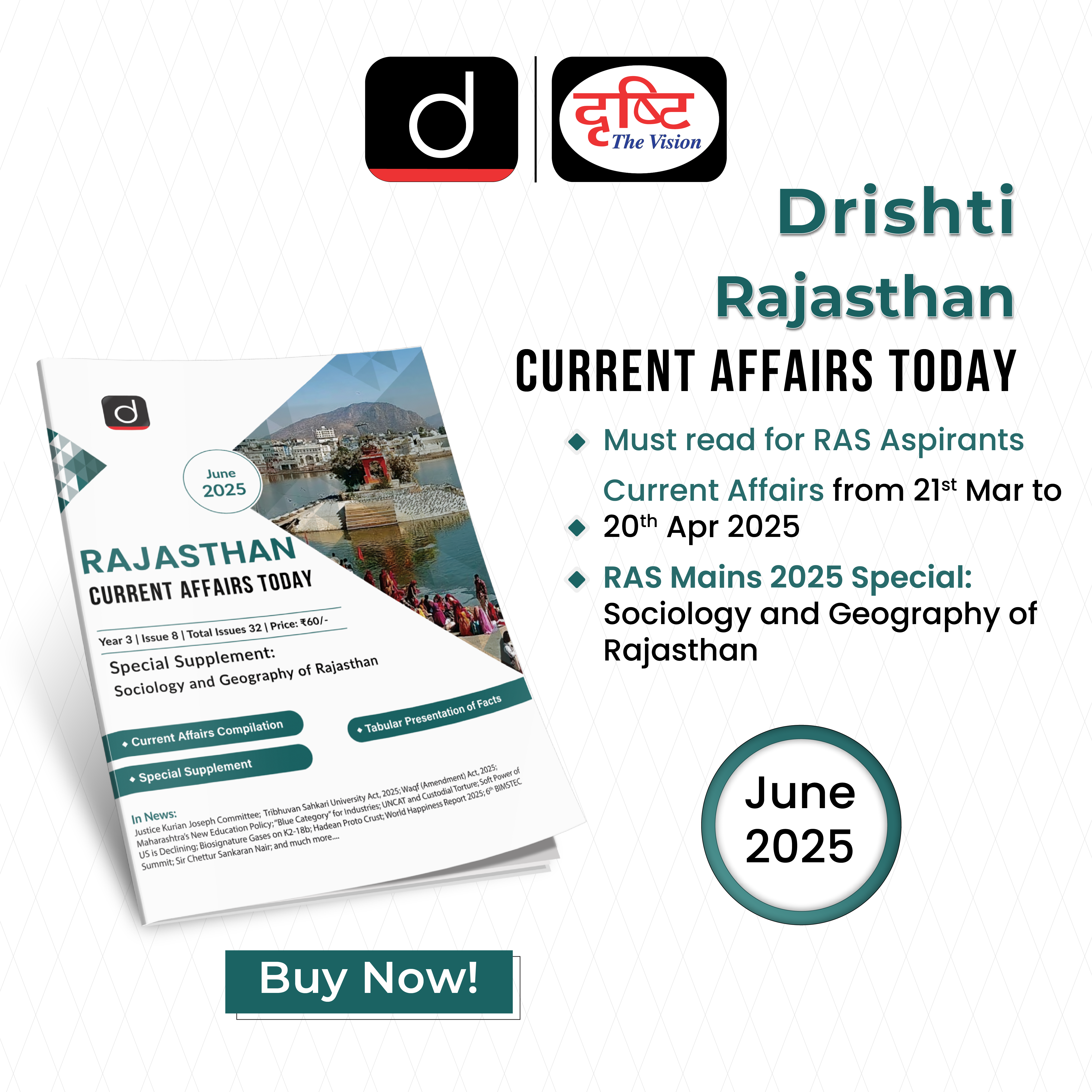Rajasthan Switch to Hindi
Felling of Khejri Trees
Why in News?
A significant environmental conflict has emerged in Rajasthan’s Thar Desert, particularly in Bikaner district, as solar energy companies begin felling centuries-old Khejri trees for land acquisition.
- This clash between ‘greenery’ (the preservation of the environment) and ‘green energy’ (solar power development) has led to widespread protests, with local farmers and environmentalists demanding stricter tree protection laws.
Key Points
Khejri Trees
- About: Khejri or Khejdi (Prosopis cineraria), also known as shami in Rajasthan, is a hardy, drought-resistant tree that has been a symbol of survival in the harsh desert.
- Khejri trees that are hundreds of years old are easily found in the fields of the western districts of Rajasthan.
- The Khejri leaves, locally called luk, are used as nutritious feed for domestic animals such as camels, goats, sheep, etc.
- The fruit Sangri is an important part of Rajasthani food.
- Recognition: Khejri was officially declared Rajasthan’s state tree in 1983.
- Under this status, the state government imposed restrictions to protect the tree, including prohibiting felling it under the Rajasthan Tenancy Act, 1965, and the Rajasthan Forest Act, 1953.
- Cultural & Spiritual Importance: In 1730 AD, a small village located 26 km southeast of Jodhpur in Rajasthan became the site of one of the first and most intense environmental protection movements in India.
- The ‘martyrs’ (notably Amrita Devi) of this movement were members of the Bishnoi community, who gave their lives to protect the Khejri trees.
- In the 1970s, this sacrifice became the inspiration behind the Chipko Movement.
- Alternative Strategies for Preservation:
- Environmentalists argue that solar power can be generated through alternatives that do not require large-scale deforestation.
- For example, solar panels can be installed on rooftops, government buildings, or even on long canals (similar to successful projects in Punjab).
- While these methods may be more expensive, they would safeguard the region's biodiversity.
Rajasthan Switch to Hindi
Rajasthan City Gas Distribution (CGD) Policy 2025
Why in News?
The Rajasthan Cabinet approved the Rajasthan City Gas Distribution (CGD) Policy-2025, which seeks to strengthen the gas-based energy framework within the state.
Note: CGD networks are an interconnected system of underground natural gas pipelines for supplying Piped Natural Gas (PNG) and Compressed Natural Gas (CNG).
Key Points
Rajasthan City Gas Distribution (CGD) Policy 2025
- About:
- It is designed to facilitate the supply of clean, safe, and environment-friendly natural gas to the public while helping to reduce carbon emissions across the state.
- Time Period of the Policy:
- The policy will remain in effect until 31st March, 2029, or until another policy is introduced to replace it.
- This five-year validity gives the government a framework for mid-term review and course correction, if needed.
- Single-Window System:
- A dedicated CGD portal will be developed as part of the implementation mechanism. This digital platform will act as a single-window system to manage all applications, track approval status, and provide necessary information to stakeholders.
- The portal is expected to improve transparency, accountability, and operational speed, removing bureaucratic delays and fostering a more business-friendly environment.
- Significance:
- Infrastructure Investment: The implementation of this policy will increase investment in CGD infrastructure, fostering growth in the sector.
- Expansion of PNG and CNG Networks: It will support the expansion of PNG and CNG networks, particularly in small towns and urban areas that currently lack access to these facilities.
- Simplified Regulatory Processes: The policy introduces simplified, time-bound procedures for CGD companies to streamline the process of obtaining permissions, land allocation, and government approvals required to set up and operate gas infrastructure.
- Environmental and Economic Impact: The policy aligns with national objectives of expanding the use of natural gas across residential, industrial, and transportation sectors.
- By increasing access to natural gas in previously underserved regions, it aims to promote environmental sustainability, improve public health, and attract economic investment in energy infrastructure.







-UPPCS-English%20(web).png)
-UPPCS-English%20(mobile).png)







.jpg)









.png)





 PCS Parikshan
PCS Parikshan

